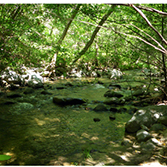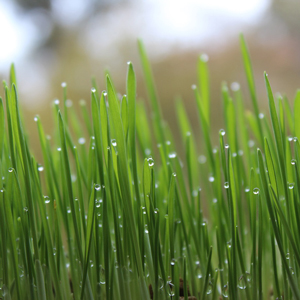History was made in mid-December when the Carmel River in Monterey County flowed through a newly constructed channel, as the Carmel River Reroute and Restoration Project achieved a major milestone. For the first time the river flowed into its new course, the former San Clemente Creek channel, bypassing the 2.5 million cubic yards of sediment that has built up behind the dam since 1921. This milestone is one of two major efforts in a three-year project involving the Carmel River – the other being the demolition and removal of the 90-year old San Clemente Dam.
The Carmel River Reroute and San Clemente Dam Removal Project is not only a groundbreaking project but also a testament to the effectiveness of private-public partnerships. Ahead of schedule and on budget, this project is more than half completed and will remove the antiquated San Clemente Dam and reroutes and restores the flow of the ailing Carmel River. The project, which began in 2013, was estimated to cost approximately $84 million and was spearheaded by a group of private and public partners, including California American Water (CAW), the California State Coastal Conservancy, the National Marine Fisheries Service and the National Oceanic and Atmospheric Association.
In 1992, the San Clemente Dam was determined seismically unsafe by the state and marked as a danger to approximately 1,500 homes and buildings below the dam. By removing the dam and restoring the river, public safety is no longer at risk. Additionally, the environment and fish species on the endangered list that were once threatened due to the dam and restricted water flow, including the California red-legged frogs and steelhead fish populations, can recover and have access to more than 25 miles of spawning and rearing habitat.
According to the San Clemente Dam removal website, additional benefits of the project include: “ restoring the natural sediment regime; reducing channel incision; reducing beach erosion that contributes to destabilization of homes, roads and infrastructure; and expanding public recreation opportunities in the region by preserving over 900 acres of watershed lands, resulting in over 5,400 acres of contiguous park land.”
Removing sediment is one of the most challenging issues to contend with during dam removal projects. A large amount of sediment lies behind the dam and along the Carmel River side of the reservoir. CAW and the team working on the project designed a solution through innovative engineering, which rerouted a portion of the Carmel River into San Clemente Creek and “transformed the Carmel River arm of the lower reservoir, already full of sediment, as the permanent sediment storage area.” In doing so, this design decreased project costs and minimized the impact on the environment. Additionally, approximately 380,000 cubic yards of sediment in the San Clemente Creek arm will be excavated and added to the Carmel River sediment storage area.
The San Clemente Dam will be removed in stages, and the project also includes removal of the Carmel River Dam, built in 1883, and located downstream from the San Clemente Dam.
The project is anticipated to be complete by late 2015 or early 2016. Once completed, CAW will transfer the 925 acres to the U.S. Department of Interior’s Bureau of Land Management, which is working with the Monterey Peninsula Regional Parks District to develop a long-term management plan for the property that will include public access and recreational trails.
This groundbreaking project is an archetype for other dam removal and river restoration projects in California and nationwide. Click here to view an update after the second year of construction/removal. To see all accomplishments to date, visit www.sanclementedamremoval.org.
The goals of removing the San Clemente Dam and rerouting and restoring the Carmel River include:
Source: San Clemente Dam Removal website: www.sanclementedamremoval.org |






